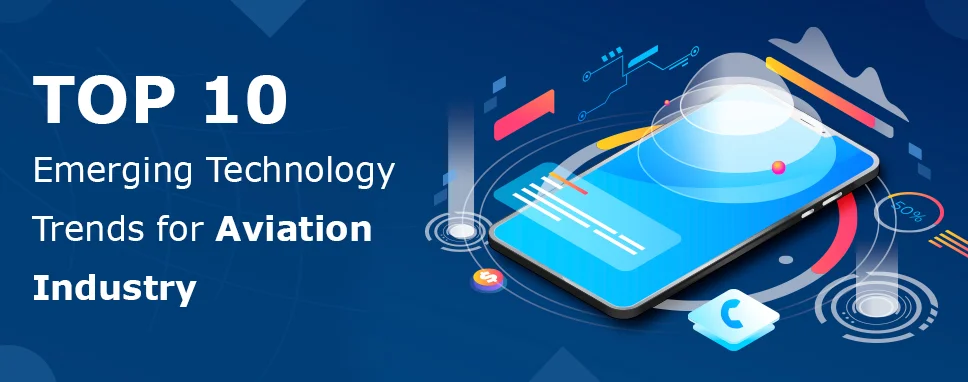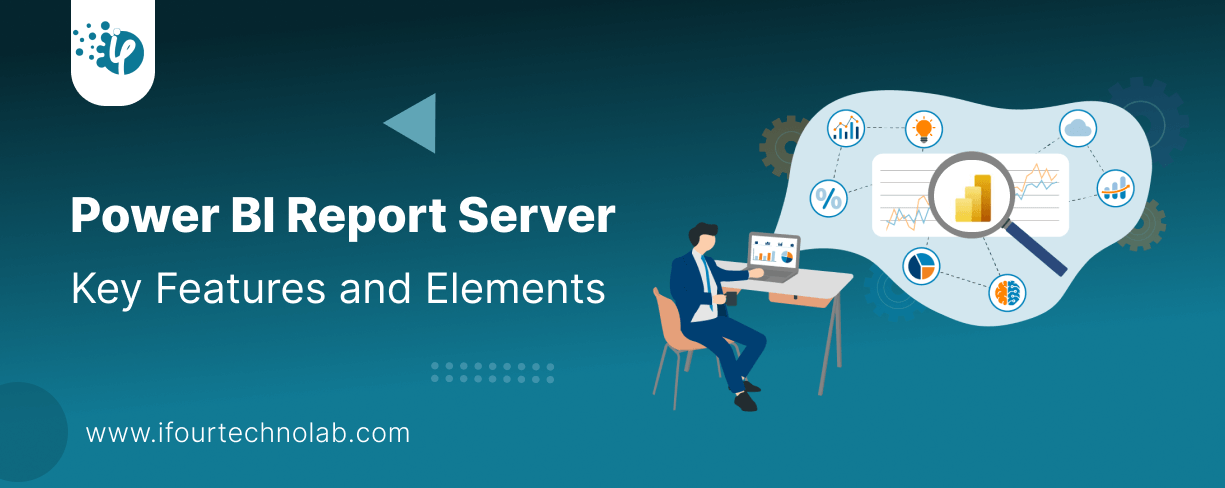How to Do Forecasting in Power BI (Steps & Accuracy Metrics)
Remember our last guide - Power BI forecasting? It revealed things that truly blocks accuracy, both structural and situational. Now it's time to take the next step. Knowing Power...
Listening is fun too.
Straighten your back and cherish with coffee - PLAY !

The Aviation industry is experiencing a ground-breaking change with the waves of technological advancements. The transformations with eclectic ideas are creatingwonders in the airport premisesand surprising the passengers traveling to their destinations.Some of the attractions are self-driving robots and wheelchairs, flying taxi services, AI machines, captivating screens, etc.Because of the right mix of these technologies, Airlines get a sustainable growth and increase in profits. By harnessing the power of captivating platforms like robotics, IoT, AI, biometrics, etc.,the Airline industry can stay challenging and competitive, dominating the market.
Here we have listed some of the staggeringtechnology trends that would bring an impactful change in the Aviation industry.
“Aerion’s AS2 business jet will be the only supersonic aircraft ever designed for carbon neutral operation. Able to cruise at 1000 mph, the AS2 will be able to fly passengers from NYC to London in just four hours with their trademarked Boomless Cruise Technology. They’re breaking ground on their new campus in Melbourne, FL, this fall (where they’re expected to hire more than 600 people) and expected first deliveries are in late 2025. Aerion believes this is the first step towards a new paradigm of global mobility that will change the way we travel in the years ahead – and all without a carbon footprint.”
- From Aerion Supersonic“Airline travel dropped 95% in April, and recovery of passenger demand to pre-COVID-19 levels is optimistically estimated to take 2.5 years or pessimistically, 6 years. What separates airlines that will reconnect with their passengers sooner than later? Customer service. EPAM, a $2.2 billion software design company, categorized major airlines into three categories: those that were reasonably well-prepared for a pandemic, those that were predominantly unprepared but have restored day-to-day operational efficiency, and those that were completely unprepared and are still struggling to navigate any sense of customer relations.
EPAM worked with an airline in the second category to solve a major challenge-an ever-increasing backlog of cancellations, vouchers, and rebooking-by implementing full-scale intelligent automation, which leverages a combination of chatbots, robotic process automation (RPA), machine learning (ML), data, analytics, and a CRM platform. The result was an 85% reduction in manual record handling time, 20+% call center volume reduction and a 1.2-point increase on a scale of 1-10 in customer satisfaction.”
- Theodor Piletski, Managing Principal, Intelligent Automation Consulting, EPAM Continuum & Katerina Molchanova, Senior Director, Intelligent Automation, EPAM Continuum
“Time-efficiency is key in our industry and technology is key from the moment a client begins to enquire. Diamonte Jets use innovative tech platforms connected to aircraft to see where jets are positioned as well as to work out total costs that incorporate each individual airport's landing fees and handling fees as well as fuel usage and passenger taxes. Thereafter when quoting and recieving contracts the clients are now preffering to do so via whatsapp and mobile rather than email. In terms of tech onboard, connectivity remains crucial and for 2021 I'd imagine seeing more aircraft implement tech like Gogo 2KU for the fastest in-flight Wi-Fi.”
- Rohan MarkJayawardene, Diamonte Jets“One dominating tech trend for 2021 is intermittent fault detection and isolation in electrical systems within military weapon systems, commercial aircraft, business jets, and unmanned systems. Undetected and hence unrepaired intermittent faults that occur in operation are categorized as No Fault Found (NFF). Half of all inflight aircraft failures result in NFF during ground testing due to diagnostic equipment limitations. NFF costs the DoD $3 billion annually and major airline roughly $40 million annually in lost revenue. Intermittent faults that result in NFF ground test results is a massive cost driver, and readiness / dispatch reliability degrader. Efforts are currently in place to deploy proven intermittent fault detection technology broadly across the DoD and the Majors.”
- Kenneth L. Anderson, President & CEO of Universal Synaptics“Over the past several years, military aviation has been challenged with readiness issues. Readiness, defined as an aircraft's immediate availability to operate a mission, has been impacted by slow maintenance, diagnostics, and logistics. A significant factor in low readiness rates has been the number of Long Term Down (LTD) aircraft. Long Term Down is defined as aircraft that are grounded in excess of 60 days.
With many aircraft immobilized for long periods, pilot training regiments suffer as an insufficient number of aircraft fail to support the number of flight hours needed. Developing an analytical tool suite to predict and support maintenance restores aircraft to a flyable condition, with an immediate positive impact on overall fleet readiness.
Our team of data analysts, software engineers and subject matter experts developed two distinct algorithms to help solve the problem. The first generated reports on which aircraft would become long term down with a greater than 84% accuracy. The second generated the estimated hours required to return to a flyable state. These algorithms move past descriptive analysis into predictive analysis, utilizing machine learning to allow aviation technology professionals to better manage maintenance, increase readiness and significantly reduce LTD.
We believe that predictive data science will dominate technological advances in 2021. We have already measured an 8% increase in mission capability (readiness) through use of our predictive analytics suite.
This improvement in readiness allows more flights to be completed and more pilots to meet their requirements while freeing up valuable time and money for aviation stakeholders
Comprehensive adoption of this platform in a commercial setting will be transformational in the aviation industries ability to operate efficiently and cost effectively.”
- Ben Johnson, CEO of Freya SystemsAmid COVID-19, with travel crawling back slowly, we’ll start to see an increased interest in shorter, more cost-effective regional flights that enable faster and better door-to-door transport of people and goods.
You’ll see bigger companies (Airbus, Boeing, Rolls Royce) scale back on research and development on newer ventures like electric propulsion. They’ll likely be focused on cutting back to stay afloat. And as new start-ups continue to show proof of concept with their technology, we’ll see an influx of mergers and acquisitions looking to invest in electric propulsion.
Dozens or more new companies will begin flying electric planes. These aircraft will likely be a mix between cargo and passenger, flying commercially. We’ll see impressive developments in battery technology, potentially moving away from lithium ion to taking more solid state form (lithium metal or lithium sulfur).”
- RoeiGanzarski, CEO of magniXTo detect the contents of liquid and possibly carry them on board, the security-based sectors are implementing x-ray scanning machines for this purpose. This would be helpful for the passengers especially for the asthma patients who need to take liquid inhalers.
With this scanner, the authorities can easily identify the liquid hazardous chemicals and probably can permit you to carry liquids on your plane.
The flying taxi is one of the breakthrough trends that began to change the way of migration.It is mostly exploited to save agreat time and reach destinations like airports, hotels, headquarters, etc.way faster. The idea of flying taxis is intensified to get rid of the road traffics, congestions, the pressure felt transportations, and take their passengers to the terminals quickly and conveniently.This superfast alternative cutsthe drivingtime into half that usually takes through roadways.
To transform the entire airport experience, Tech Giants are introducing seamless InFlight Connectivity to digitize the experience and keep passengers stay relevant. Re-inventing the scenario of Wi-Fi at 40000 feet from the groundis not less than a wonder. It would amuse thetravelers and gets them one step closer to the entertainment platform allowing them to watch high definition movies, series, matches, play video games, etc.Not just that, businessmen can save time and continue their online-based office works without any hassles.
Self-driving robots in airports would be among the extremely appealing trends that would catch the attention of passengers.Starting from board pass entry to the arrival departure, these self-driving robots would play a vital role. Not just that, these robots can help passengers with navigations, information related to café, ATM, hotels, terminal gates, scanning, picking luggage, etc.Apart from that, self-driving wheelchairs would also help with internal mobility and additional needs of the travellers.
The changing Technology trends would help the Aviation sector to dominate the current market. Certainly,thesewould reshapethe structure of the Airline industry and its core business.These trends would address the complexities of passengers, transforming them into a seamless experience.In this blog, we have discussed the top technology trends of the Aviation sector in detail.Reviewing these trends, we can imagine the picture of the future Aviation sector.

Remember our last guide - Power BI forecasting? It revealed things that truly blocks accuracy, both structural and situational. Now it's time to take the next step. Knowing Power...

Did you know that 70% of CTOs (Chief Technology Officers) hesitate to adopt Microsoft Power BI because of its myths and misconceptions that float around. What they fail to see is...

Every CTO knows the struggle of managing complex reports. The inefficiency of scattered data, the constant juggling between reporting tools, the challenge of ensuring accurate KPIs...